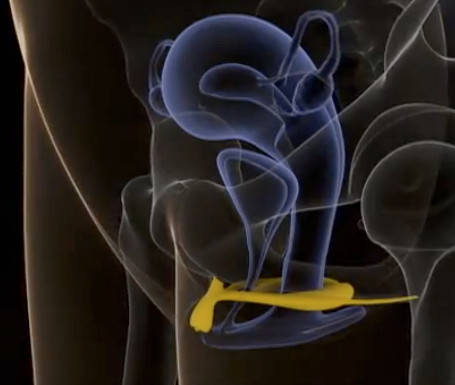
First of all, it’s a complete accident of timing that this post appears next to tomorrow’s post. I wrote tomorrow’s post about a month before I wrote this one.
With that out of the way, let’s talk about one of the most interesting things I recently learned about the fairer sex and, well, sex. What you see in the image on this post is a 3D rendering of an MRI of the clitoris. The first most interesting thing about this image is that the clitoris wasn’t fully mapped until 2005! (WHAT?!?) Between the insane numbers of sexual dissatisfaction reported by women, the constant bafflement among men about how to best make sure their partners can also climax, and the awesome fact that is is the ONLY organ in the human body that exists purely for pleasure I am baffled that no one studied it this thoroughly until 2005. You’d think that, at the very least, there would be a potential goldmine for companies to help alleviate all that sexual dissatisfaction. The second most interesting thing about this image is the shape. Those of us men who’s actually taken the time to learn about women so that sex can be about both of us, not just the man, know about the nub we can see on the pelvic area. But pretty much no one knew about the wishbone shape of the internal aspects of the clitoral tissue. It’s almost like discovering that the clitoris is an iceberg and we can only see the 10% that floats above the surface of the water.
This discovery also makes a lot more things make sense. Science has often tried without success to find any special patch of tissue within a women that would correspond specifically to a “g-spot”. But, the discovery of clitoral tissue within the vaginal walls makes it more likely that those women who are able to climax without any of what we used to consider clitoral stimulation were in fact getting that stimulation from the inner tissue. Its shape also explains why various positions are more pleasurable for a woman than others. (While nearly all of them tend to cater to the way male stimulation works) Finally, the quote at the end (which is from an article about the study, not the study itself – hence its casual and more crude tone) “These are internally under the labia majora. When they become engorged with blood they actually cuff the vaginal opening causing the vulva to expand outward. Get these puppies excited, and you’ve got a hungrier, tighter-feeling vaginal opening in which to explore!” This explains the fact that the level of sexual excitement leads to different feelings of tightness independent of the muscles that are used to tighten the opening with kegels.
I’d have to say that this discovery truly changes how I understand a lot about the dynamic between men and women during sex. (Of course, there’s more than just this physical dimension – there’s the mental and emotional aspect to consider as well) That’s why I wanted to share the study on my blog to try and spread the knowledge and hopefully lead to couples who are able to connect with each other on yet another dimension. Sex is definitely not the end all/be all of a relationship, but it certainly is a key aspect that needs to be nurtured along with the other aspects.
If you want to read more, this Boing Boing article has links to the study and a blog post that talks about the study.
